
Muffler resonator what is it?
Content
- What is a muffler resonator?
- The history of the appearance of a resonator in the exhaust system
- What is it for?
- The principle of operation of the resonator
- What does the resonator consist of?
- Types of resonators
- Resonator failure symptoms
- Common resonator problems
- What happens if you remove the resonator
- Questions and answers:
Without a high-quality exhaust system, a modern car would sound no different from a tractor. The problem is that any engine during operation will make loud sounds, since explosions occur in its cylinders, due to which the crankshaft rotates.
Moreover, the power of the internal combustion engine depends on the strength of these microexplosions. Since the combustion of the air-fuel mixture produces harmful gaseous substances and a large amount of heat, each car is equipped with a special system for removing gas from the engine. Its device includes several elements similar to each other. ABOUT muffler и catalyst has been covered in separate reviews. Now let's consider the features of the resonator.
What is a muffler resonator?
Externally, the resonator resembles a smaller version of the main muffler. This part is located at the beginning of the car's exhaust, just behind the catalytic converter (if available on a particular car model).
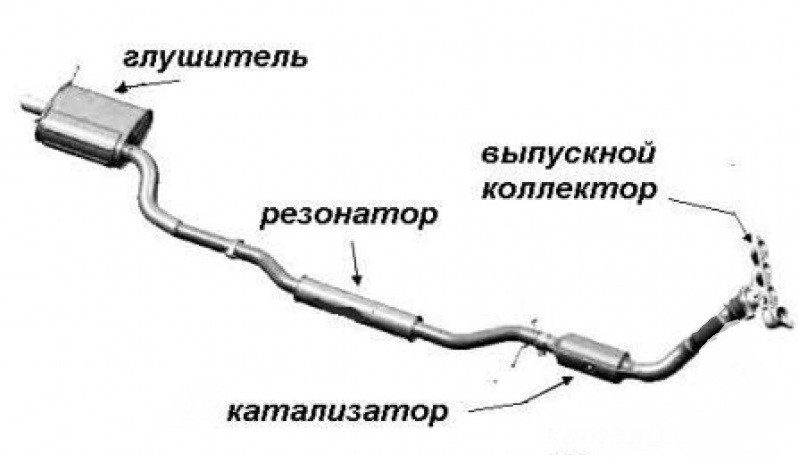
The part is made of steel, which must withstand high temperatures. The gas exiting the engine exhaust manifold is very hot and intermittently flowing. The resonator is one of the first elements to stabilize the exhaust. Other parts are responsible for cleaning combustion products, or rather to neutralize them, for example, in diesel engines, this is a particulate filter, and in most gasoline engines, a catalytic converter.
Because of the high temperature of the burnt gases, the car resonator is made of metal that can withstand intense heat without deforming or losing its strength.
The history of the appearance of a resonator in the exhaust system
With the advent of the first internal combustion engines, the issue of noise reduction and exhaust purification became acute. Initially, the exhaust systems had a primitive structure, but over time, to improve the efficiency of the system, various auxiliary elements were added to it.
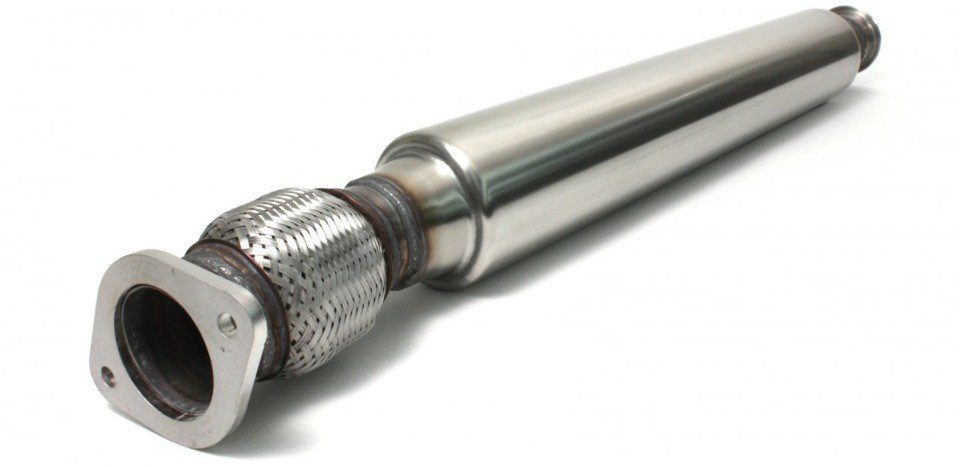
In the first half of the 1900s, a small metal bulb with baffles was added to the exhaust system, against which hot gases hit, which led to a decrease in exhaust noise. In modern machines, resonators have different shapes and designs.
What is it for?
The main function of this element, like that of a muffler, is to reduce the exhaust noise level and divert the flow outside the car body. The burnt gases at the outlet of the engine have a high temperature, therefore, the presence of bulky parts makes it possible to reduce this indicator to a safe value. This will prevent people walking very close to the exhaust pipe of the vehicle.
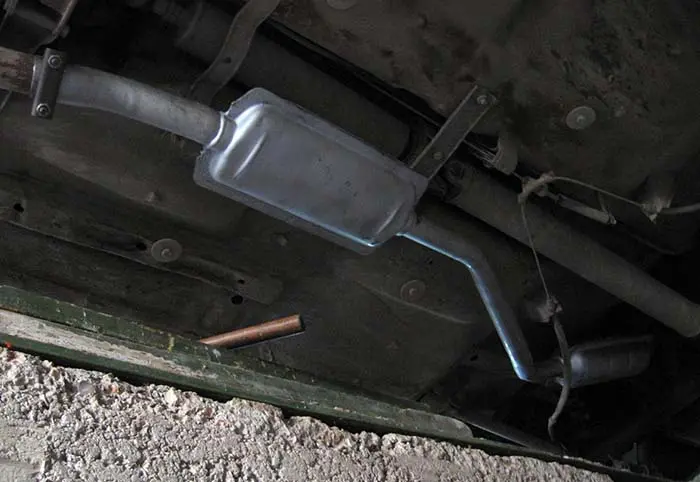
The power characteristics of the engine depend on the device of a small muffler. For this reason, the tuning of sports cars also includes the modernization of this exhaust part. Some models of resonators are involved in cleaning the exhaust from harmful substances contained in the flow.
What is the difference between a resonator and a muffler?
Both elements come under the heading of a tuned exhaust system. This means that the dimensions of individual elements and their structure are developed for the parameters of a particular vehicle. For this reason, installing homemade parts often degrades the performance of the power unit.
Despite the similar function, the resonator and the muffler are different elements. The resonator will always be closer to the motor. It is responsible for reducing ripple and damping low frequency resonant sounds. The main muffler is responsible for the final damping and cooling of the exhaust gases. As a result, the exhaust sound of classic exhaust systems does not irritate the human ear.
The principle of operation of the resonator
When the engine is running, hot gas enters the exhaust manifold from the cylinders through valves. The stream is combined in the front pipe and enters the catalyst at high speed. At this stage, the toxic substances that make up the exhaust gases are neutralized.
Further, this flow (and it still does not have time to cool down and slow down) enters the tank of a small muffler. The exhaust temperature in this unit still reaches over 500 degrees Celsius.
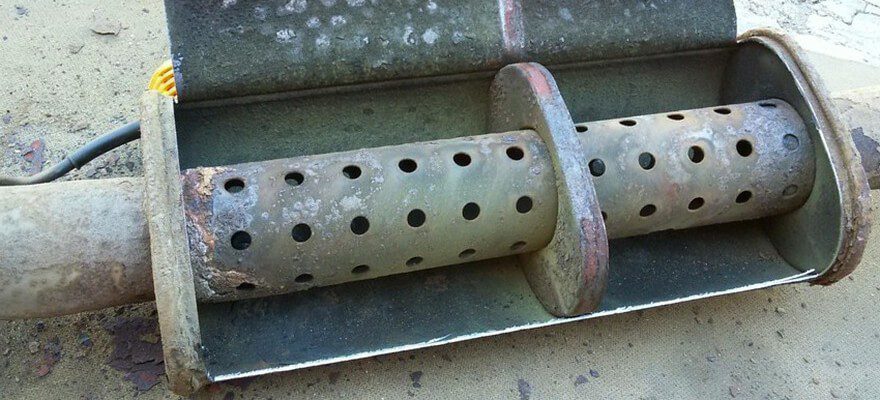
In the cavity of the resonator there are several baffles and perforated pipes installed opposite the walls of these bridges. When gas enters the first chamber from the main pipe, the flow hits the bridge and is reflected from it. Further, he is faced with a new portion of exhaust gases, and part of the volume enters through the perforated pipe into the next chamber, in which a similar process takes place.
When the exhaust enters the reservoir, the stream mixes and undergoes several stages of reflection from the bridges, absorption of sound waves occurs and the gas gradually cools. Then it enters the main muffler through the exhaust pipe, where an identical process takes place, only with a large number of stages. The final cooling of the gas and the stabilization of the sound wave take place in it.
The efficiency of the engine depends on the throughput of this element. The lower the exhaust resistance, the easier the exhaust gases are removed from the cylinders, making it easier for the crankshaft to rotate, and it does not need to use some of the energy to remove combustion products. This feature is used to create sports exhaust systems. For this reason, these machines are very loud. However, this part cannot be completely removed from the system, since the car will be less dynamic without an exhaust system.
More details about the operation of the exhaust system and the resonator are described separately in this video:
What does the resonator consist of?
Depending on the model, the spare part will have its own structure - manufacturers are developing different modifications. The resonator flask consists of several chambers separated by metal partitions. These elements are called reflectors. They perform an important function - they slow down the exhaust flow and make it quieter.
The baffles contain tubes (in some cases with perforations), through which the flow enters the next chamber. Some models are made completely hollow, while others have a seal between the chambers and pipes that cannot burn, even if the exhaust gases came directly from the engine combustion chamber. This material provides additional damping of the sound wave.
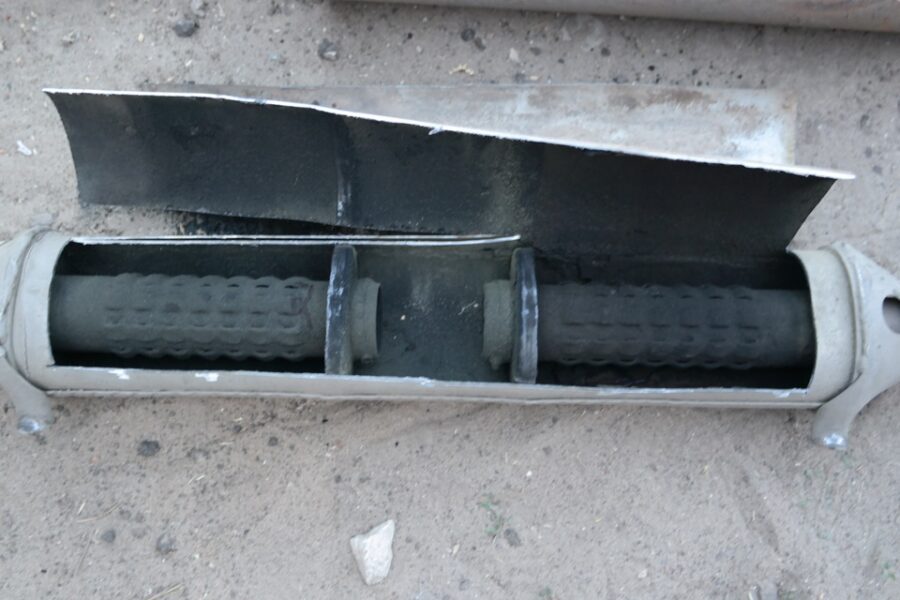

Types of resonators
Manufacturers use their innovative designs to minimize the resistance generated in the car's exhaust system, while at the same time making the system produce a minimum of noise. Constant attempts to strike a balance between engine performance and exhaust system efficiency have resulted in a wide variety of resonators in the automotive aftermarket.
Such a variety is difficult to classify, so in this review we will only mention two types of resonators:
- For two-stroke motors, the part is of great practical use. When such a motor is running, the power unit also partially removes unburned fuel. If you remove the resonator from the exhaust, this will significantly affect the power characteristics of the internal combustion engine, moreover, in the direction of reducing thrust and increasing the gluttony of the unit;

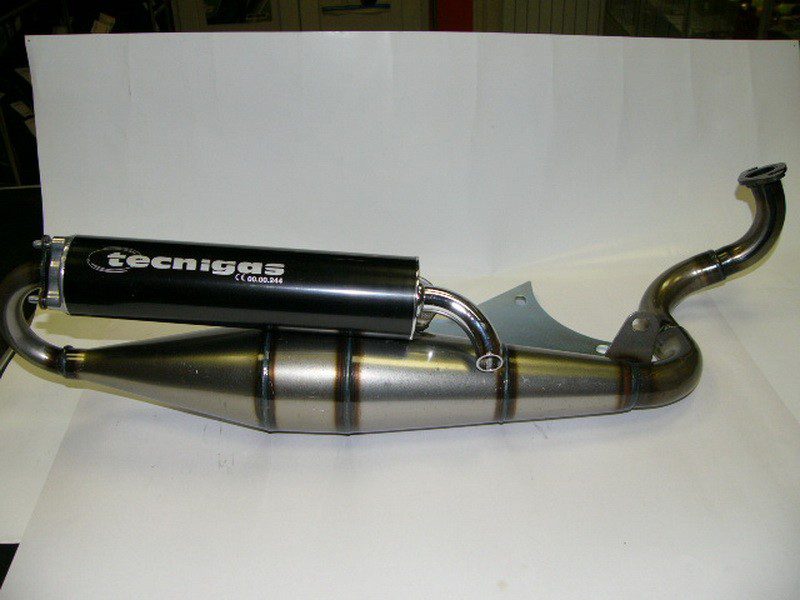
- For four-stroke engines, the presence of a resonator, on the contrary, reduces the efficiency (in some cases, measurements showed a difference of 15 percent). But at the same time, environmental indicators go down. For this reason, the modernization of the exhaust system of sports cars either excludes the presence of a resonator, or a direct-flow analogue (for example, a stronger) is installed instead.

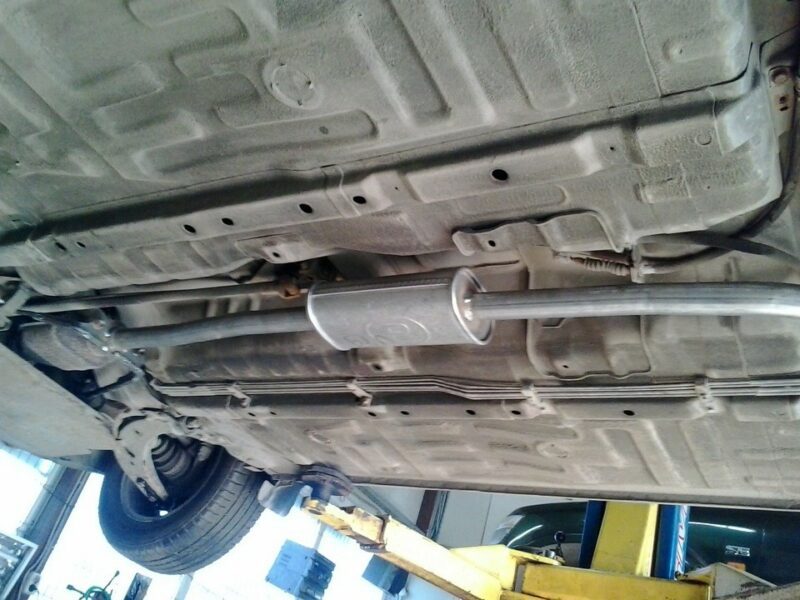
Direct-flow resonator
Car tuning enthusiasts put various non-standard elements on their cars to change the way the power unit works or just for the sake of acoustic changes. Depending on the car model and the structure of the exhaust system, direct-flow resonators change the sound of the exhaust system and somewhat change the efficiency of the engine.
A straight-through resonator means a metal bulb without chambers located inside, as in the case of classical resonators. In fact, this is an ordinary pipe, only with an increased diameter (to increase the volume of the exhaust system and dampen high-frequency sounds) and with perforated walls.
Functional Testing
When the resonator fails, it can be identified by the following signs:
- The smell of exhaust gases appears in the cabin;
- A rattling sound appears;
- Smoke emanates from underneath as from an exhaust pipe.
When at least one of these signs appears, you need to look under the car and check the condition of the resonator. In many cases, a visual inspection is sufficient (the bank is burned out). Here are the problems with the resonator to look for:
- Traces of penetrating rust (it appears due to constant contact of the resonator with aggressive reagents, which are sprinkled with roads, or due to impacts);
- Through hole as a result of metal burnout. This happens when unburned fuel is thrown into the exhaust pipe;
- Mechanical damage - appears due to careless driving on a bumpy road.
If the examination of the resonator did not give any results, and the flask rattles violently during the operation of the motor, then the problems are inside the flask. In this case, one of the partitions may come off or one of the cavities may clog. In most cases, at the first stages, the damaged resonator can be patched up by welding, but if the problem is started, the part will have to be changed.
Resonator failure symptoms
So, the use of a resonator in the exhaust system is a reliable means that reduces the noise of a car during engine operation and allows the vehicle to pass an environmental test.
If the resonator fails, this could adversely affect the performance of the motor. This spare part is non-separable, therefore, in the event of any malfunctions, it is simply replaced with a new one.
Most breakdowns are detected by sound and diagnosed by visual inspection. Here are the most common resonator failures:
- Rattling sounds when the motor is running. This is often like metal parts hitting each other. The reason - the reflector or the tube inside the can burned out;
- Loud and intermittent exhaust - body burned out or corroded. This is often the result of poor-quality welding or poor pipe connections;
- The motor suddenly lost power - inside the can either was deformed, or a part that blocked the passage of exhaust gases fell off.
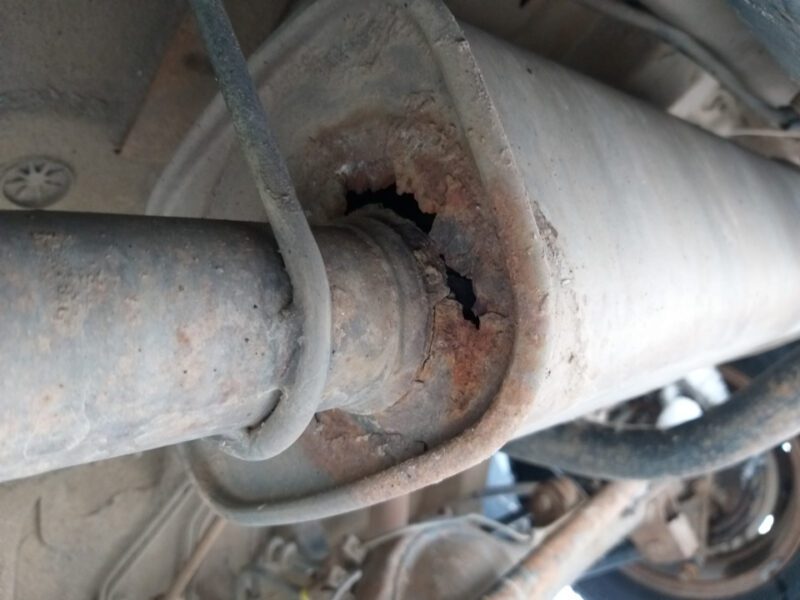

If the sound of the exhaust system has changed, there is only one conclusion - the problem is in the resonator or in the main muffler, and the part needs to be replaced.
Common resonator problems
Here are the most common resonator problems and solutions:
| Malfunction | Cause | How to fix |
| A strong sound is heard when the motor is running | The resonator does not cope with its task - it does not dampen high-frequency vibrations. This is mainly due to the depressurization of the flask (welded seams have dispersed or the outer wall is burnt out) | Weld the damage if it is small. As a last resort - replace the part |
| Bounce and other extraneous noise coming from the resonator | Most likely, one of the cavities has burnt out or the partition has fallen off. | Replace part |
| Decreased motor power | The resonator is carbonized. To make sure of this, you need to diagnose the exhaust system, as well as the efficiency of the fuel system, gas distribution mechanism and the composition of the air-fuel mixture. | If possible, clean the resonator. Otherwise, the part is changed to a new one. |
Most often, resonators suffer from rust because this part is in constant contact with moisture and dirt. No anti-corrosion agent helps in preventing rust, because all the agents burn out when the motor is running (the resonator gets very hot).
To prevent the rapid formation of rust, the resonators are treated with a special heat-resistant primer, and they are made from ordinary steel. There are also models made of aluminum steel - a budget option, protected from moisture and dirt (a layer of aluminum on top of steel).


The most efficient and at the same time expensive option is the stainless steel resonator. Of course, due to sudden changes in temperature, this part will surely burn out, but this happens many times later.
What happens if you remove the resonator
Although lovers of the sharp sound of the exhaust work and put straight-through exhaust systems. but it is not recommended to remove the resonator due to:
- Louder operation of the exhaust system (the sound is too harsh), which is critical for driving in a sleeping area;
- Failure of the settings for the operation of the power unit, which in most cases leads to excessive consumption of fuel;
- Accelerated wear of the main muffler, as too hot and strongly pulsating exhaust gases will enter it;
- Disturbances in the distribution of shock waves in the exhaust system, resulting in a loss of engine power.
The abandonment of the classic resonator must be combined with the modernization of the entire exhaust system, which is much more expensive than replacing a damaged part.
Questions and answers:
What is a resonator for? It is part of the vehicle's exhaust system. The resonator reduces the noise and pulsation of the exhaust gases (they resonate in its cavity, like in an echo chamber).
How does a resonator affect sound? When the engine is running, exhaust gases are ejected from it with such force that it is accompanied by deafening popping. The resonator reduces the noise level in this process.
What is a resonator and muffler for? In addition to damping sounds, the resonator and the muffler provide cooling of the exhaust gases (their temperature, depending on the type of engine, can reach 1000 degrees).


One comment
Mauno Tyrväkäinen
Is the resonator technology used to dampen the sound of mopeds?